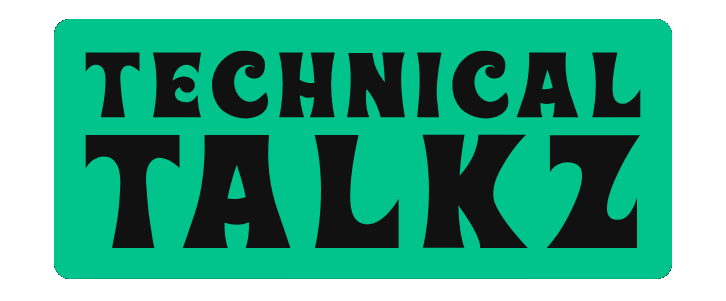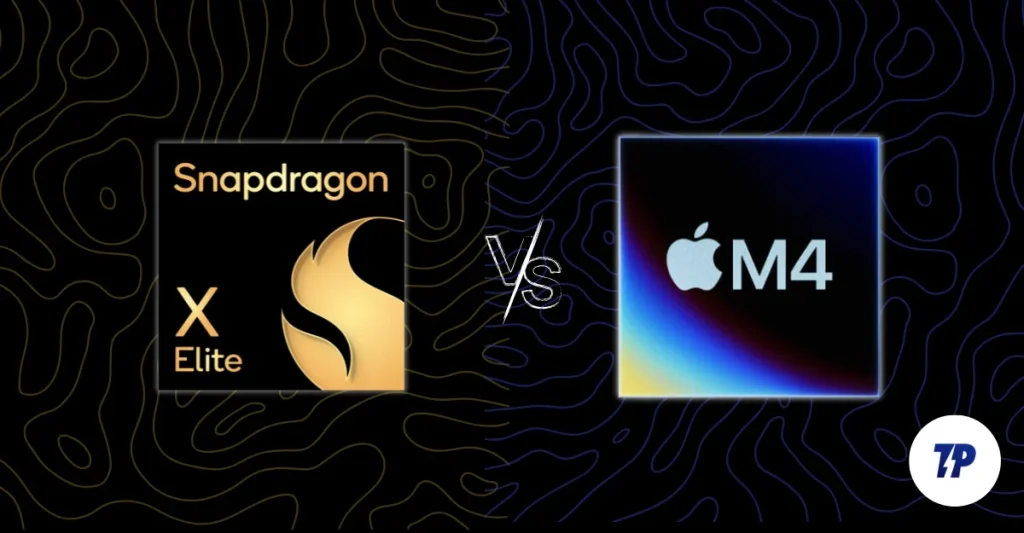The PC market is witnessing a major transformation in 2025. With Qualcomm’s Snapdragon X Elite shaking up the Windows ecosystem and Apple launching the all-new M4 chip in its next-gen iPads and upcoming Macs, we’re entering a whole new era of AI-centric computing.
But the real question is: Can Snapdragon X Elite truly rival Apple’s cutting-edge M4 chip? And if you’re planning to buy a new laptop or device this year, which one should you bet on?
In this deep dive, we’ll explore the architecture, performance benchmarks, AI processing capabilities, battery life, software experience, and real-world use cases of both chips — helping you decide where the future is really headed.
⚙️ 1. Architecture & Core Design: Battle of Custom Silicon
🔹 Apple M4
- Process Node: 3nm TSMC (second-gen, same as A18 Pro)
- CPU: Up to 10 cores (4 performance + 6 efficiency)
- GPU: Enhanced 10-core GPU with hardware ray tracing and dynamic caching
- Neural Engine: 38 TOPS (trillion operations per second)
Apple’s M4 is focused on AI-first design, with increased neural processing speed, better thermal control, and a tighter synergy with macOS and iPadOS. It’s also the first Mac/iPad chip truly marketed for on-device generative AI tasks.
🔸 Snapdragon X Elite
- Process Node: 4nm TSMC
- CPU: 12 high-performance Oryon cores (custom-designed by Nuvia)
- GPU: Adreno GPU with ray tracing support
- NPU (AI Engine): 45 TOPS + 75 TOPS total platform AI throughput
The X Elite is built exclusively for Windows on ARM, focusing on delivering PC-class performance with mobile-class efficiency. Unlike Apple’s hybrid core approach, Qualcomm is betting entirely on high-performance cores.
🧠 Verdict: Snapdragon leads in raw AI and multi-core performance, while Apple has better power-efficient design and tighter OS optimization.
🚀 2. Benchmark Comparisons: Who’s Faster in Real Use?
While synthetic benchmarks don’t tell the full story, they still give us clues.
| Metric | Apple M4 | Snapdragon X Elite |
|---|---|---|
| Geekbench 6 (Single-core) | ~3,500 | ~3,000 |
| Geekbench 6 (Multi-core) | ~13,000 | ~15,000 |
| AI Processing (NPU) | 38 TOPS | 45+ TOPS |
| GPU Support | Metal, hardware RT | DirectX, Vulkan, hardware RT |
Early reports show Apple M4 leading in single-core, which helps with UI fluidity, app launching, and responsiveness. However, Snapdragon X Elite dominates multi-core workloads, like compiling, 3D rendering, and multi-threaded tasks.
🧠 Verdict:
- Snapdragon wins in raw multi-core performance.
- Apple M4 excels in responsiveness and system integration.
🤖 3. AI Capabilities: The Real Battlefield of 2025
Both chips are designed for the AI PC era — but they approach it differently.
🔹 Apple M4 AI Strengths:
- 38 TOPS Neural Engine
- Optimized for Apple’s native apps: Final Cut, Logic Pro, Pixelmator, etc.
- On-device Siri and generative AI image editing
- Privacy-first approach to personal data processing
🔸 Snapdragon X Elite AI Strengths:
- 45 TOPS NPU (Hexagon) + platform AI up to 75 TOPS
- Native support for Microsoft Copilot+ PC
- Can run local LLMs like Llama 3 on-device without cloud
- Compatible with open-source AI tools: Ollama, Stable Diffusion, Whisper
🧠 Verdict: Snapdragon has clear AI hardware superiority and broader AI flexibility on Windows, especially for developers and creators.
🔋 4. Battery Life & Efficiency
🔹 Apple M4
- Expected battery life: 18–20 hours (based on MacBook Air/MacBook Pro M3 data)
- Industry-leading efficiency per watt
- No fan needed in iPads, silent operation
🔸 Snapdragon X Elite
- Qualcomm claims multi-day battery for thin and light Windows laptops
- Windows OEMs (e.g., Samsung, Lenovo) targeting 20+ hours
- Still needs real-world validation
🧠 Verdict: Apple wins on proven efficiency. Snapdragon looks promising, but battery performance depends on OEM integration and Windows optimization.
💻 5. Software & App Support: Ecosystem Wars
🔹 macOS/iPadOS + M4:
- Near-perfect app support for Apple Silicon
- Final Cut Pro, Adobe Suite, Xcode — all native
- Seamless experience from iPad to Mac
- iPhone synergy with Continuity features
🔸 Windows + Snapdragon:
- Huge leap in Windows-on-ARM compatibility
- Emulation of x86/x64 apps now better (thanks to Prism emulator)
- Microsoft 365, Edge, Chrome, Adobe Creative Cloud — all native or optimized
- Gaming support is still hit-or-miss
🧠 Verdict: Apple still wins on software maturity. But Qualcomm + Microsoft are finally catching up — especially with AI-native workflows.
🧪 6. Real-World Use Cases
🎬 Content Creators
- Apple M4 is a better fit for Final Cut Pro, Logic, and macOS-native creative suites.
- Snapdragon X Elite supports tools like DaVinci Resolve and Premiere, but still growing.
💻 Developers
- Apple excels with Swift, Xcode, and performance per watt.
- Snapdragon enables native VSCode, GitHub Copilot+, and efficient AI inferencing.
🤖 AI Enthusiasts
- Snapdragon runs on-device LLMs, Stable Diffusion, Whisper, etc.
- Apple supports AI tasks within its closed ecosystem.
✅ Final Verdict: Who Wins the 2025 Silicon Showdown?
| Use Case | Winner |
|---|---|
| 🧠 AI Performance | Snapdragon X Elite |
| ⚙️ Raw Multi-core Power | Snapdragon X Elite |
| 🔋 Battery Life | Apple M4 |
| 💻 App Ecosystem | Apple M4 |
| 🧬 Chip Efficiency | Apple M4 |
| 🛠️ Developer & AI Flexibility | Snapdragon X Elite |
In short:
- If you’re tied into Apple’s ecosystem and want stability, battery life, and polish — Apple M4 is the safe, refined choice.
- If you want AI freedom, power-user multitasking, and future-ready features — Snapdragon X Elite finally delivers a compelling Windows alternative.
2025 marks the beginning of the true AI PC era, and this rivalry will only intensify from here.



